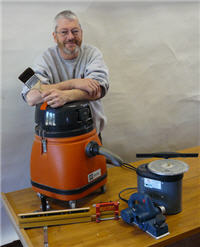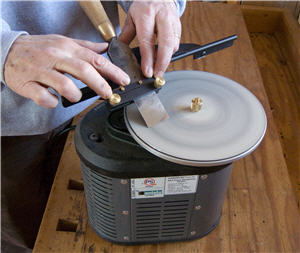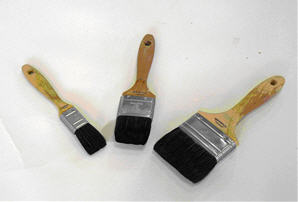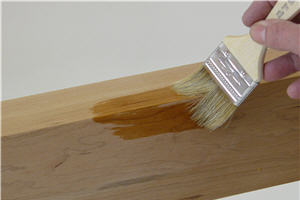 This story presents five of my favorite second tier tools. I call them “second tier tools” because they aren’t essential tools you need to set up a shop. However, they are high impact tools that are wonderfully useful and really make a difference in my woodworking endeavors. I think of them as the perfect shop partner. They save me gobs of time and do their job exceptionally well. The frequency that these tools are put to use in my shop and the smiles they bring to my face make them essential tools in my book. I can’t imagine working without them.
This story presents five of my favorite second tier tools. I call them “second tier tools” because they aren’t essential tools you need to set up a shop. However, they are high impact tools that are wonderfully useful and really make a difference in my woodworking endeavors. I think of them as the perfect shop partner. They save me gobs of time and do their job exceptionally well. The frequency that these tools are put to use in my shop and the smiles they bring to my face make them essential tools in my book. I can’t imagine working without them.

1. A Tool Actuated Shop Vac.
My shop hasn’t been same since I brought in a tool-actuated vacuum. Ever since I hooked the vacuum up to my random orbit sander, I have unhooked myself from the end of a broom. Also, my respirator spends more time on the shelf and less time plastered to my face.What makes these vacs shine is the tool actuation, the flexible hose, and the low noise level compared to the typical shop vacuum. I simply plug the tool’s cord into the vac, flip the vac’s switch to “auto” and the vacuum comes on when the tool is turned on. When the tool is turned off, the vac runs for a few seconds longer to clear the hose. The flexible 1-1/4″ hose interferes very little with operating the tool.
I originally bought the vac to corral the dust from my sanders. Since then, manufacturers have introduced a number of tools with built-in dust collection. My jigsaw and biscuit joiner no longer leave a mess in their wake. Even my newest router is plumbed for dust extraction. I can use my vac for light floor sweeping, but heavy chips or shavings tend to plug the narrow hose. For large volume cleanup, I still use my regular shop vacuum with a 2-1/4″ hose.
 If you can’t spring for a new shop vacuum, try an outlet-based switch. Plug your shop vacuum and tool into the outlet and you’ve got a tool-actuated system. The only downside to this system is it sends the collection hose and the tool’s power cord to two different places, and that can be a bit awkward. I use this system primarily for stationary tools such as my miter saw. This particular switch is available through Sears for about $20. You’ll find similar devices from other manufacturers at woodworking specialty stores.
If you can’t spring for a new shop vacuum, try an outlet-based switch. Plug your shop vacuum and tool into the outlet and you’ve got a tool-actuated system. The only downside to this system is it sends the collection hose and the tool’s power cord to two different places, and that can be a bit awkward. I use this system primarily for stationary tools such as my miter saw. This particular switch is available through Sears for about $20. You’ll find similar devices from other manufacturers at woodworking specialty stores.

2. Power Sharpening System.
A sharpening machine dramatically increased my use of hand planes and chisels. That’s because these tools are no longer a chore to keep sharp. I can touch up an edge or even dress out a nick in seconds. The result is my tools are always sharp and ready to go when I need them. I now reach for a hand tool when I used to think a power tool was the only choice.The only down side to my sharpening machine is I now have something else to spend money on; antique hand tools. Flattening the back of an old plane iron or chisel used to take hours by hand. It was enough to keep my tool collection meager. Now I can get the back of a rusty old chisel to a mirror finish in a few minutes. My hand tool collection has grown to include specialized hand planes and chisels. I’ve tried a number of powered sharpening systems from wet to dry. I like the abrasive disc type the best. They are fast, mess-free and they put a very fine edge on a tool. You’ll still need a little hand honing to bring the edge up to ultra-sharp, but for 90% of what I do, the edge right off the machine serves me well.
I still recommend a woodworker become proficient at hand sharpening. But I love using this machine for my bench chisels, planes, carving chisels and to sharpen my wit – Well maybe that’s a lost cause.

3. After Market Miter-Gauge.
An after market miter gauge elevates your table saw to a new level of precision and versatility. A good miter gauge marries the accuracy and convenience of a miter saw to the repeatability of a table saw. The net result is my table saw now does much more than cut wood to width and length. Dead-on miters are now a cinch. So are perfectly square cuts on multiple parts. I can even safely work with small parts on my table saw.A couple things to look for in an after market miter gauge: an adjustable miter bar and positive angle stops. Miter bars that adjust from above are so much easier to set up. I wouldn’t bother with anything else. Look for a gauge with preset stops for common angles like 45-degrees and 22-1/2-degrees. Make sure the presets don’t interfere with fine-tuning the setting. If a 45-1/4-degree miter is the setting you need, a miter gauge that wants to slip back into a 45-degree detent can be very aggravating.

4. Hand Held Power Planer.
I do a lot of work with slab wood. This little planer has been indispensable for creating a flat surface that can then be sent through a planer or drum sander. I also use my hand-held power planer to get a reasonably flat surface on a board that’s too wide for my jointer. Although I don’t get this tool out of its case every day, I am so glad I have it when the need arises.
5. Set of High Quality Brushes.
Any finisher will tell you that a set of high quality brushes is essential to a successful finish. For years I ignored this advice and assumed a brush is a brush. After a friend let me use one of his good brushes, I was sold.If you haven’t done it yet, treat yourself to a good brush. Yes, $30+ dollars is a lot to spend on a brush, but when you compare the cost to other tools you own, it’s not such a steep price. Plus, with proper care, a good brush can last a lifetime.
Somehow finishing tools get short shrift when it comes to our willingness to spend on quality. Where we might not think twice about forking over a $100 on a drill, we balk at spending $30 on a brush. Yet, the drill needs only spin a bit or drive screws; mostly behind the scenes work. But your brushwork is front and center for all to see. Believe me, a good brush makes a difference in the way a finish goes on and levels out. Good brushes hold more finish so there’s less dipping back into the can or jar. A good brush will also release the finish evenly so fewer strokes are required to level.
 For oil or solvent based finishes, look for a natural bristle brush. The brush should be thick with uniform sized bristles. If you use water-based products, a high quality nylon brush is the way to go. Look to artist supply houses for the best nylon brushes. Nylon bristles made with Gold Taklon nylon are a pretty sure bet.
For oil or solvent based finishes, look for a natural bristle brush. The brush should be thick with uniform sized bristles. If you use water-based products, a high quality nylon brush is the way to go. Look to artist supply houses for the best nylon brushes. Nylon bristles made with Gold Taklon nylon are a pretty sure bet.
 A quick test of a good brush is to run the brush over a corner. A good brush will wrap the corner without splitting and apply the finish evenly. An inexpensive brush tends to split over the corner and apply the finish in an uneven pattern.
A quick test of a good brush is to run the brush over a corner. A good brush will wrap the corner without splitting and apply the finish evenly. An inexpensive brush tends to split over the corner and apply the finish in an uneven pattern.
Photos By Author
What are your favorite woodworking tools and why? Email us at: editor@wwgoa.com.


Thanks for the useful tips.
I agree on all counts. Here's my challenge...I bought an iVac unit. It worked great, until I plugged my bug ShopVac in along w/ my SawStop worksite saw. It blew up the iVac. I contacted iVac and they explained that the combined amperage of the devices have a limit, and you will ruin iVac switch if you run too much amperage through it. My solution was to build a rolling cart with the highest power, lowest amperage shop vac I could find running through a cyclone collector. It worked GREAT...until I got my Laguna 14BX band saw with the companion light. Whenever I have the light on and turn on the saw, as soon as my vacuum tries to come on, I blow the fuse in the iVac. Fortunately it does not burn up, like the last time. Any suggestions for vacuum switches that can handle a higher combined amperage?
Excellent articles !!
You say you work on slab wood how do you keep the bark on
what is the name of the abrasive disc system mention in this article